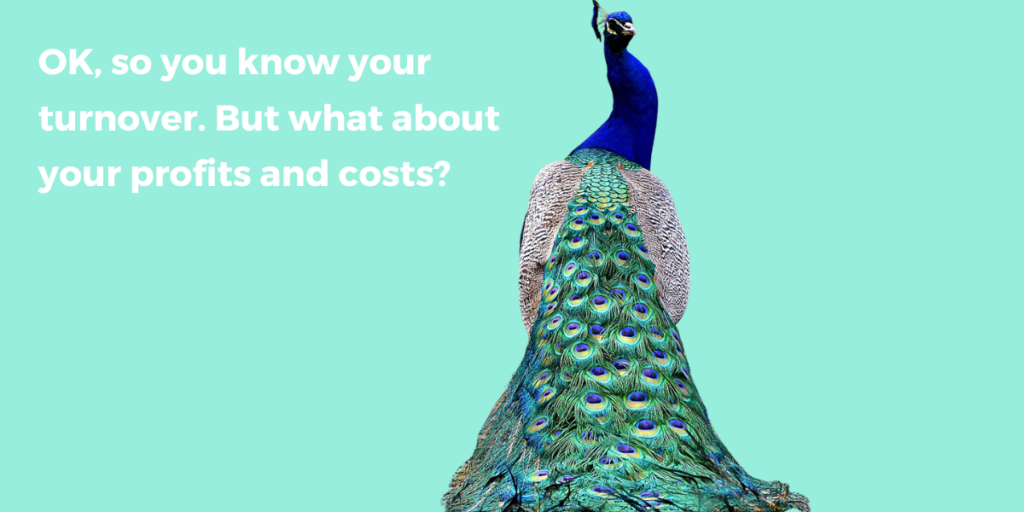When it comes to big, fancy business numbers, turnover is the one strutting around showing off. It makes sense, it’s a clear indicator of how much demand there is for a service or product and it’s exciting to see it trend upwards. Everyone and their grandma wants to know about turnover.
The thing is, soaring sales won’t actually tell you how well a business is doing. It’s entirely possible to have a spectacularly popular service and still be struggling to pay the bills. In short, a business can have skyrocketing sales and be a hair’s breadth away from having to shut up shop.
Let’s look at ways you can accurately track success (while increasing your overall profit) and ensure you know exactly how well your business is doing.
#1. Model your business around the profit you want to make.
It may come as a surprise, but business owners regularly map out long-term goals for turnover and not the cash they want to be making. Now, it’s common to think more sales means more money, but that’s really not true. With increased sales comes increased demand for staff, bigger premises, tax and more. Actually, an uptick in turnover is a signal to check in on your overall spending.
Instead, build your mid to long-term plan around the amount of money you want to make after all the bills are settled.
Now, sharpen the lens a little. What can you do in the short term to make that happen? A big piece of the puzzle is making sure money stays in the business. You can do that by using HMRC’s tax rules to your advantage.
#2. Get real familiar with what you can and can’t put through the business.
It’s a very worthwhile investment to sit down and get into the nitty gritty of expenses. The sooner you know what you can charge to the business, the better. Talk to your accountant, make a comprehensive list of tax-deductible items and stick to it.
It won’t be a restrictive list. In fact, you’re probably going to find there are a bunch of items you could have been putting through the business all along.
In particular, there are two benefits when you know exactly what’s tax deductible.
- You’ll keep more cash (it will transform how your business’s well earned cash is spent)
- You’ll save more cash (it can alter what you pay in tax).
When you’re well-versed in what you can expense to the business, your profit will show it.
#3. It’s only gospel if it’s from your accountant, not your best mate.
It’s important to know it’s not one-size-fits-all when it comes to write-offs. Don’t let word of mouth influence what you spend (but by all means, let them take you out for dinner and put it on their business). It can be pretty tragic finding out a whole line item of expenses has no place on your tax submission. Now you’ve got a bigger bill than expected.
Take everything with a pinch of salt and check with your accountant.
#4. Think of your finances as a sum of parts, not as a whole.
Cash flow is the movement of money in and out of your business. When you vigilantly monitor it, it’s incredibly valuable data. Even better, the longer you’ve been operational, the more informative it is.
Monitoring it reveals spending patterns and KPIs for yourself and your customers. It maps out when bills are due and when you’ll be paid too. It tells you what will be in your account at the end of the week, and more importantly what you can expect the week after. You’ll quickly be able to see how much profit you’re actually making because you’ll see what payments are due and what’s left over.
Additionally, when your cash flow is well managed, you can forecast the peaks and troughs of spending. This means you won’t make that big investment right before a shed load of bills are due. You can plan for big spending at the right time, so you’re never caught off guard.
In short, if you or your accountant are skilled in cash flow forecasting, you’ll be able to read the future. That’s some serious power right there (and a heck of a lot more insightful than turnover).
You can only control what you can control.
Turnover isn’t everything. In fact, it’s only the outline of the picture (and that picture can look quite different when coloured in). The saying is: turnover is vanity, profit is sanity, and cash flow is reality. Ultimately, sustained profit comes from getting stuck into your cash flow.
The sooner you’re getting to grips with the other numbers making up your finances, the sooner you’ll be able to take advantage of what they can do for you. And man, they can do a lot.
Now, we live for this stuff, but that doesn’t mean you do. Fill out our form and we’ll show you exactly what’s so cool about playing with numbers for a living.

